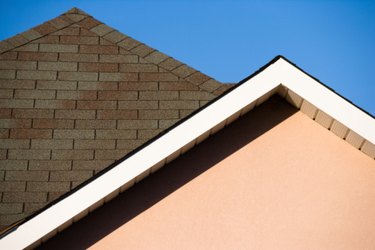
Because of its fire-resistant properties, asbestos was common in many home materials including roofing shingles. However, asbestos fibers can cause serious lung and respiratory problems if inhaled. It is virtually impossible for anyone but a trained professional with a high-powered microscope to tell definitively whether a shingle contains asbestos. However, there are ways you can determine whether it is likely that your shingles contain asbestos. If you think they might, you should hire a professional to remove and dispose of the shingles.
Step 1
Determine when the shingles were installed on your roof. Asbestos shingles were so common during the 20th century that almost any shingles installed between 1920 and 1986 probably include asbestos. If you don't know the age of the shingles, inspect them for wear. If they look old, they might have asbestos fibers in them.
Video of the Day
Step 2
Look to see what kind of shingles you have. Most homes have asphalt shingles, and asbestos is more common in asphalt shingles. Roofing adhesives, roofing felt and base flashing also might include asbestos.
Step 3
Look for asbestos-cement shingles, a mixture of asbestos fibers and cement, or asbestos-cement corrugated roofing, which is thicker and more often found on old sheds, barns and low-income housing.
Video of the Day